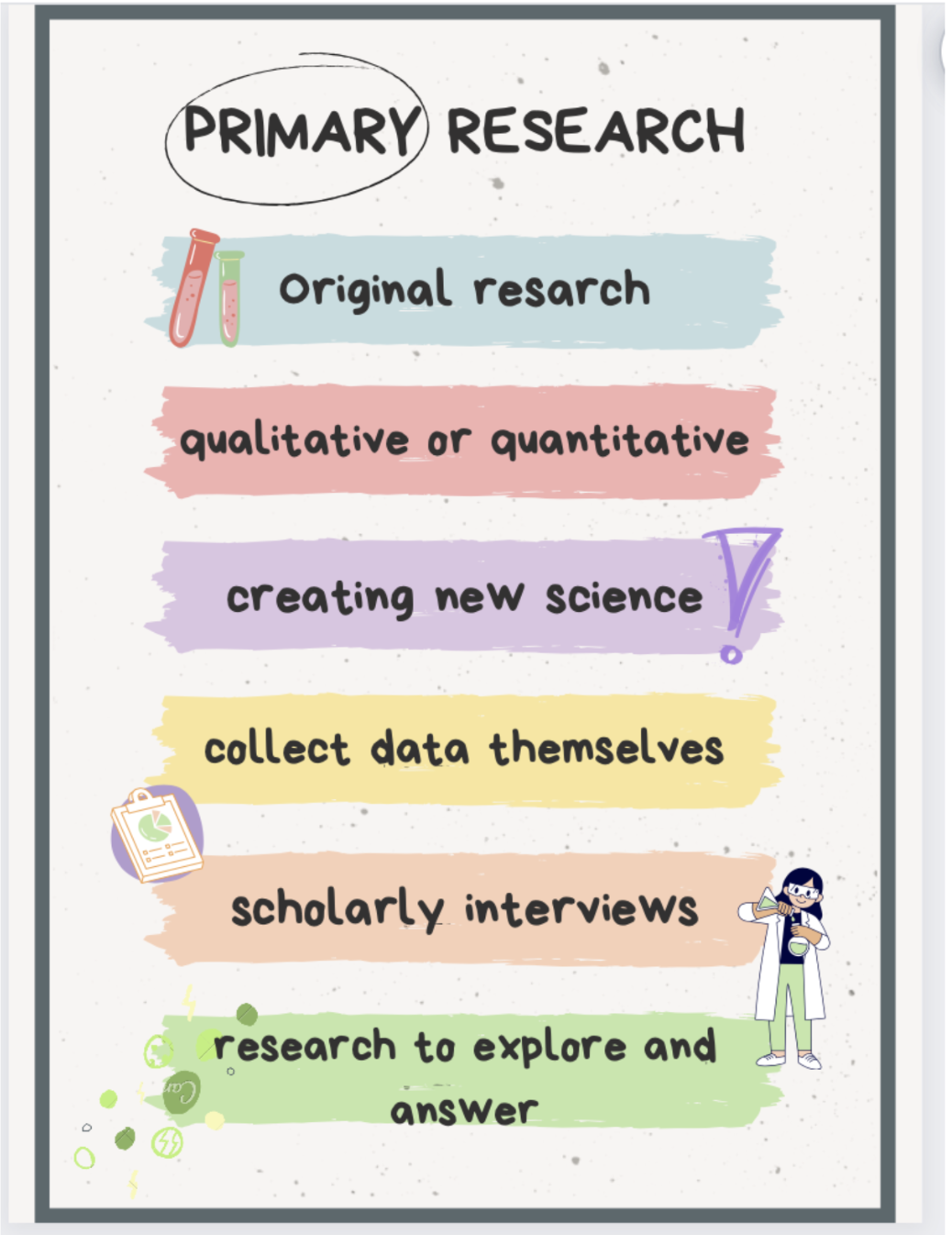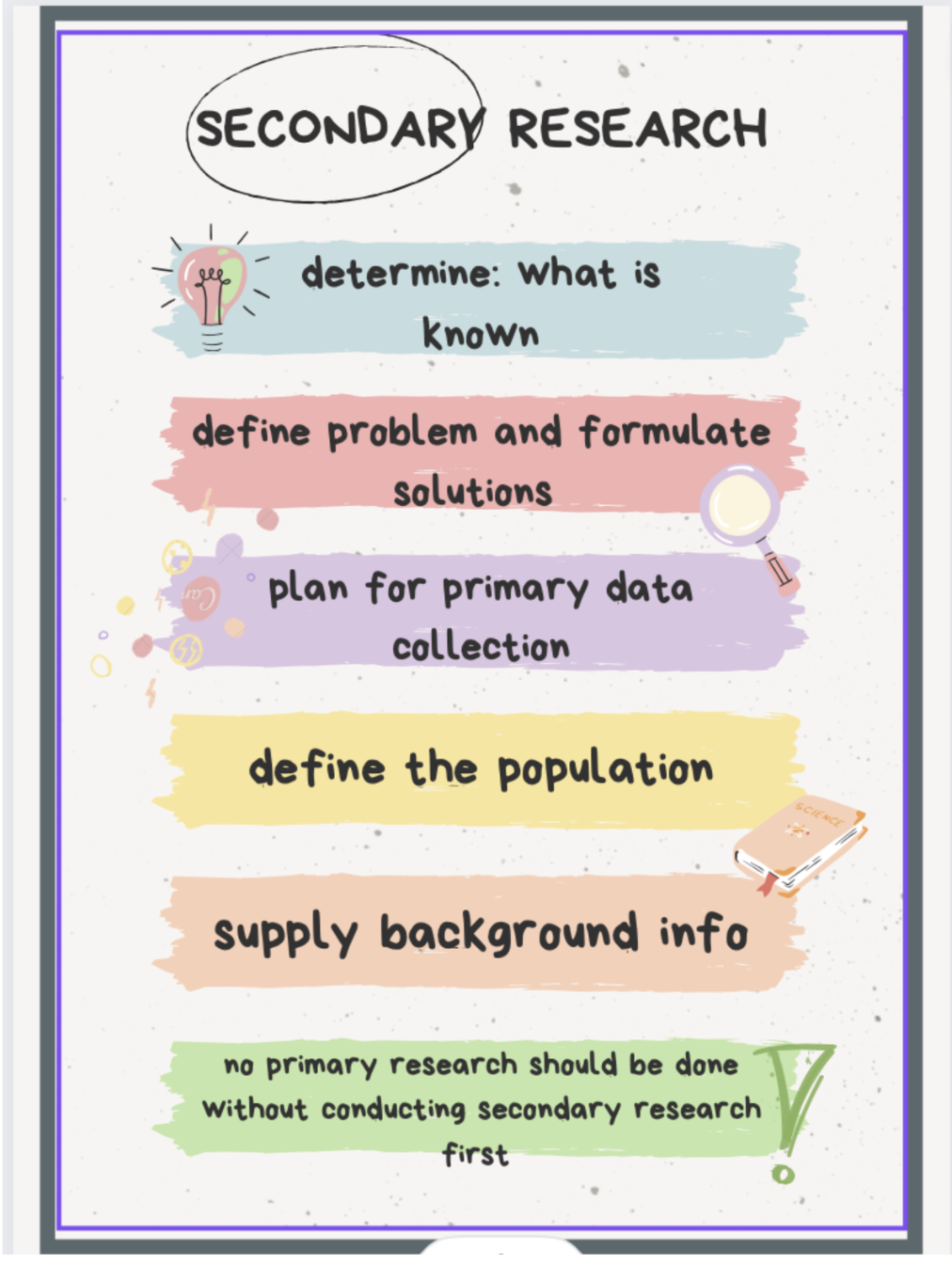Unit 3: Getting to, and thinking critically about, the [Secondary] Research
11 *Primary vs Secondary Research
Students tend to get a wee bit discombobulated in this chapter and I’ll tell you why — it’s those STINKIN’ PRIMARY SOURCES!
In 1305 we’re talking about social scientific research methods and primary RESEARCH. Although our humanistic friends give us some great advice about how to evaluate a primary source, a primary source is pretty darned different from primary research.
Learning Objectives
What is the difference between primary and secondary research? When and how to utilize each type of research? And how is primary research different from a primary source??
Primary vs Secondary Research
Research can be categorized into two types: Primary vs Secondary
Primary Research is original research (e.g., qualitative, quantitative) that a researcher performs to explore or answer a question. This is the type of research a scientist performs to answer their own questions with data that they collect themselves.
Ex. conducting scholarly interviews, surveys, analysis, observations, etc. Used to create new science (then published via journal or book).
Secondary Research is research has been conducted independently of you is used to further your own research or knowledge. Often published in journals and accessible through databases. By conducting secondary research, you can develop a combination or summary of existing research. These resources can be used to help form your research question or hypothesis, then conduct your own primary research. Mainly used for preparing primary research.
Ex. Traditional textbooks, market research, literature reviews
These two types of research can be distinguished by thinking of primary as the original person conducting their own new research and secondary as a summary or collection of existing original, primary research.
So, what’s the big deal about Secondary Research?
Five Main Purposes of Secondary Research:
- Determine – What is known?
-
- While reading secondary research regarding a topic, researchers can see what research has already been done and how they might attempt to further study the topic or what questions they might attempt to answer.
-
- Define the problem and formulate solutions.
-
- Through reading compiled summaries of past research, researchers can see what problems or limitations other studies have encountered, and formulate ways to counteract that.
-
- Plan for primary data collection.
-
- By comparing to past research, researchers can create a plan for which methodology and sampling method they will use.
-
- Define the population.
-
- Secondary research can provide a clearer picture of the population the researcher intends to reach, and which avenues are best to represent the population most effectively.
-
- Supply background information (you can compare the researcher’s data).
-
- Comparing your data to other study’s data can be helpful to see what new things may have been found in your study.
-
No Primary research should be done without conducting Secondary research first!
TEXTBOOK CONTRIBUTION
Example contributed by: Monica Buchholz, Erica Cole, Charlie Boyle, Marvin Gutierrez, Edwin Leon
Here are some key points to remember about primary v secondary research compiled by Caroline McCullough and Abby Lundvall! (Fall 2022)


Unit 3: Getting to, and thinking critically about, the [Secondary] Research
